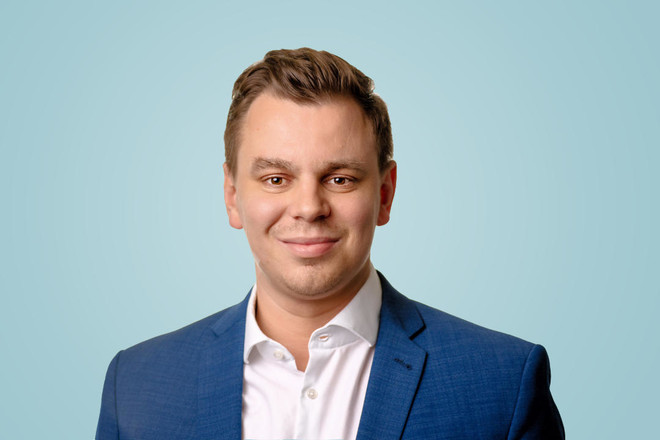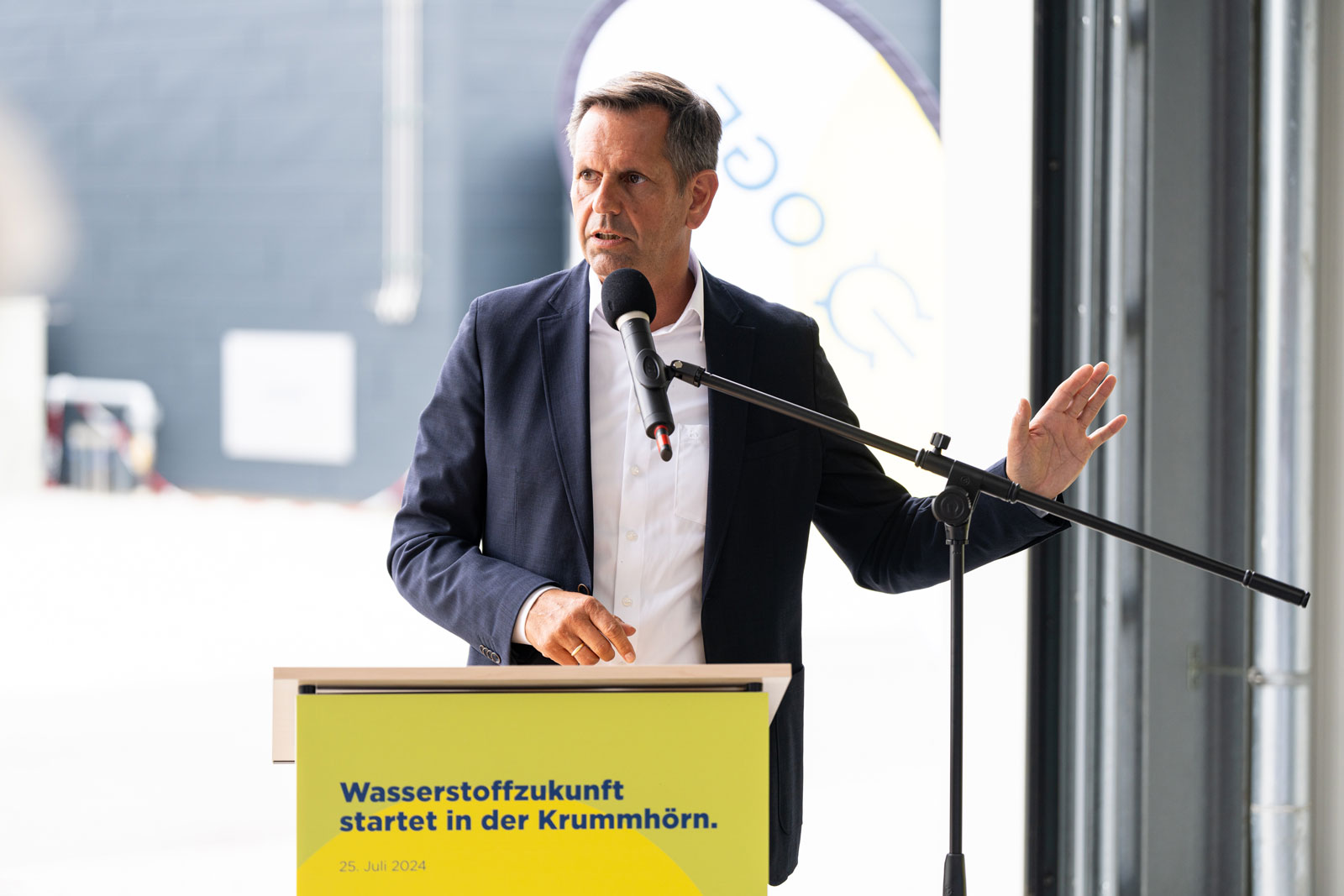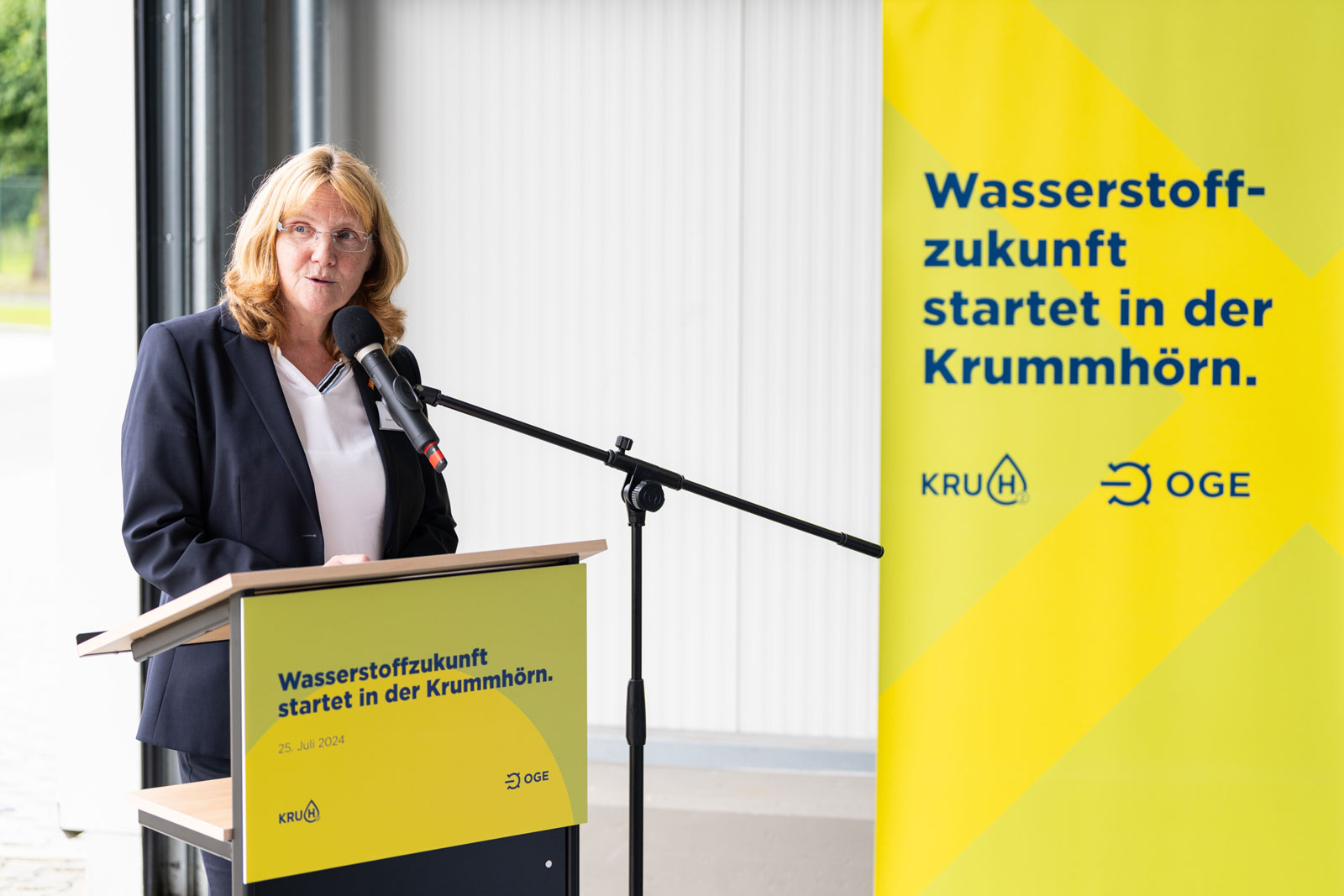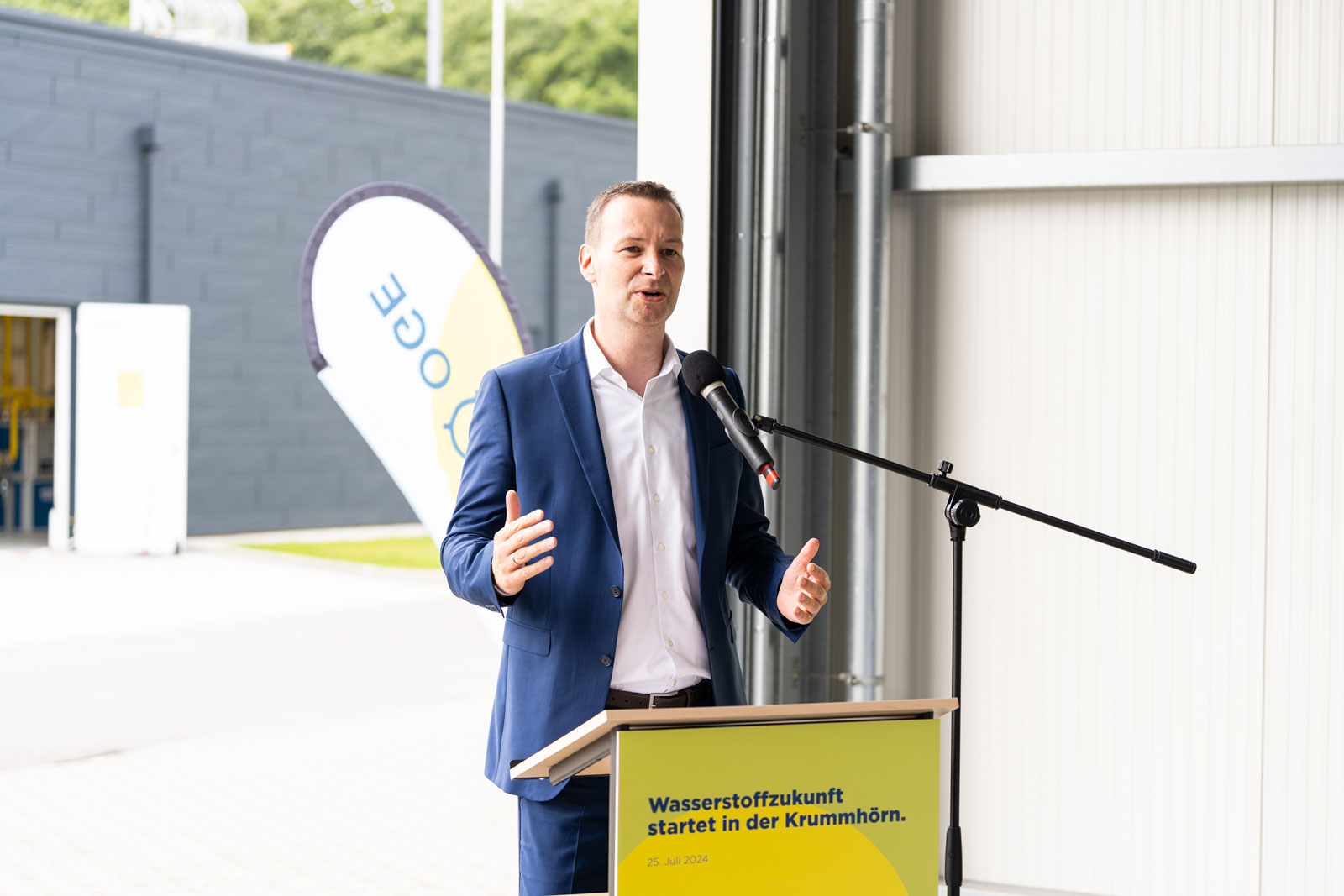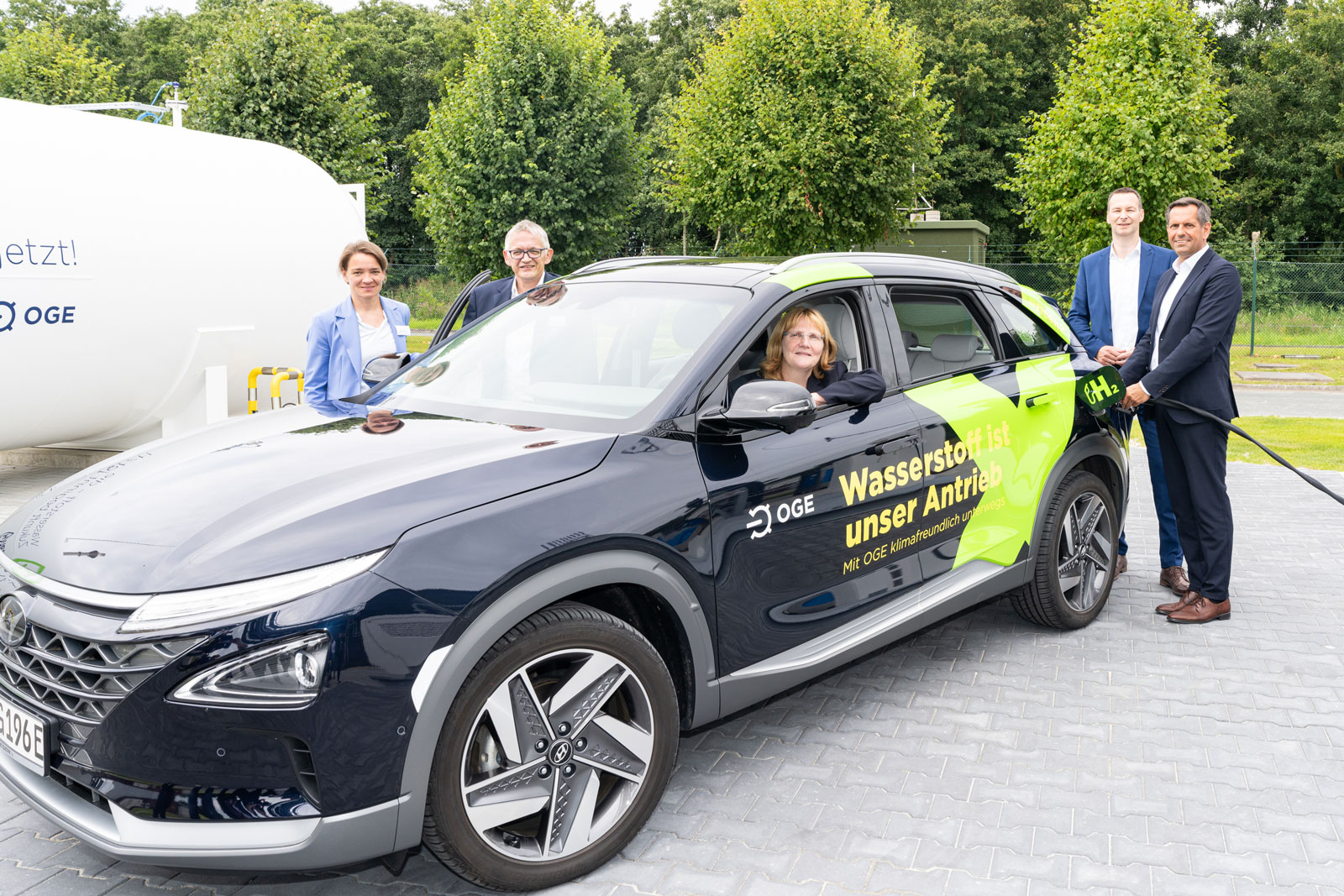Hydrogen project
KRUH2 – The initial spark in the northwest
A major project to promote hydrogen technology and the energy transition in Lower Saxony.
The energy transition is progressing, and hydrogen is playing a central role in this. With the KRUH2 project in the north-western Krummhörn region, we are setting an important milestone in sustainable energy supply. The aim is to advance hydrogen technology, gain practical experience and support the goals of the national hydrogen strategy.
Lower Saxony – an important state for the energy transition
Lower Saxony, known for its wide landscapes and impressive North Sea coast, plays a central role in the German energy transition. With a strong focus on wind power, the region is ideal for innovative projects such as KRUH2.
No other federal state generates as much electricity from wind, solar and biogas as Lower Saxony. In 2023, Lower Saxony generated more renewable electricity than it consumed. Lower Saxony is therefore able to cover 100.6% of its own electricity needs in a climate-neutral manner through renewable energies 1.
With comprehensive funding programmes and a clear commitment to renewable energies, the state government actively supports projects such as KRUH2. This political support creates an environment for the implementation of ambitious energy projects and strengthens the region as a centre for renewable energies.
KRUH2 – One megawatt more on the shore
KRUH2 is an innovative project that aims to advance hydrogen technologies and gain practical experience with H2 technologies. It serves as a platform for cooperation and is a showcase project for policymakers and other stakeholders. Partnerships with leading companies such as Viessmann, the start-up CibusCell and SAP demonstrate cross-value-chain collaboration.
The way KRUH2 works is as impressive as it is simple: the electricity required is purchased primarily from renewable energy sources such as wind power. This electricity is converted into hydrogen by electrolysis. The electrolyser in the project has a production capacity of around 210 Nm³/h (approx. 19 kg/h) of hydrogen, which corresponds to around 3 tank fillings of a hydrogen car. The hydrogen produced is stored in flexible buffer tanks so that it can be used as needed and in line with market conditions. The stored hydrogen is used to generate heat and to fuel vehicles.
Another key aspect of the KRUH2 project is the digital twin. This digitalisation platform optimises the entire value chain of hydrogen production. The platform enables real-time monitoring and analysis of production processes, which leads to significant efficiency gains. The long-term vision of the project is to connect several plants for the sustainable and efficient production of hydrogen in a larger circular economy.
Commissioning event
On 25 July 2024, the KRUH2 project was officially commissioned at the OGE compressor station in Krummhörn. Numerous participants from politics and the press, as well as project staff, were present to celebrate this milestone.
Olaf Lies, Lower Saxony's Minister for Economic Affairs, Transport, Construction and Digitalisation, emphasised the importance of the project: "With this project, OGE is demonstrating the future of our energy supply. And it is no coincidence that such projects are being developed here in Lower Saxony. Just last week, we announced the funding of 10 large-scale hydrogen projects in Berlin together with Federal Minister for Economic Affairs Robert Habeck. The federal and state governments are investing 1.3 billion euros here. Lower Saxony has the opportunity to become one of the most important hydrogen producers in Europe. And this is precisely where KRUH2 is a project that is making an important contribution to the energy transition and to achieving climate targets in Germany, both now and in the future. This is because OGE is showing solutions to one of the most important questions, namely: what to do with unused wind power."
Thomas Hüwener, CEO of OGE, adds: "KRUH2 is a real-life operation that serves as a model. Here in the Krummhörn region, where wind power in particular offers great potential for renewable energies, the project demonstrates sector coupling. Specifically, it demonstrates how our technical operations can be self-sufficient in terms of heat supply and mobility."
The guests were given insights into the technical aspects and the functioning of the project. The event underlined the importance of KRUH2 as a showcase project for the energy transition in Germany and emphasised the special role of the Krummhörn as an ideal region for such pioneering projects. Lower Saxony, as an important state in the energy transition, offers optimal conditions for innovative energy solutions with its wind power on the North Sea coast.
Three questions for the project manager
Harald Beek, born on 23 December 1970 in Emden, began his professional career in 1988 at a medium-sized mechanical and plant engineering company. In 1991, he successfully completed his training as an industrial mechanic in mechanical and systems engineering. Seven years later, in 1998, he passed the final examination as an energy electronics technician in plant engineering. In 2001, he moved to Ruhrgas AG (predecessor of OGE). In 2008, he became a state-certified technician in mechanical engineering mechatronics. He has been working at the Krummhörn compressor station since 2012. Initially as head of maintenance and repair and since 2018 as project manager in the Technical Operations North. We have questions:
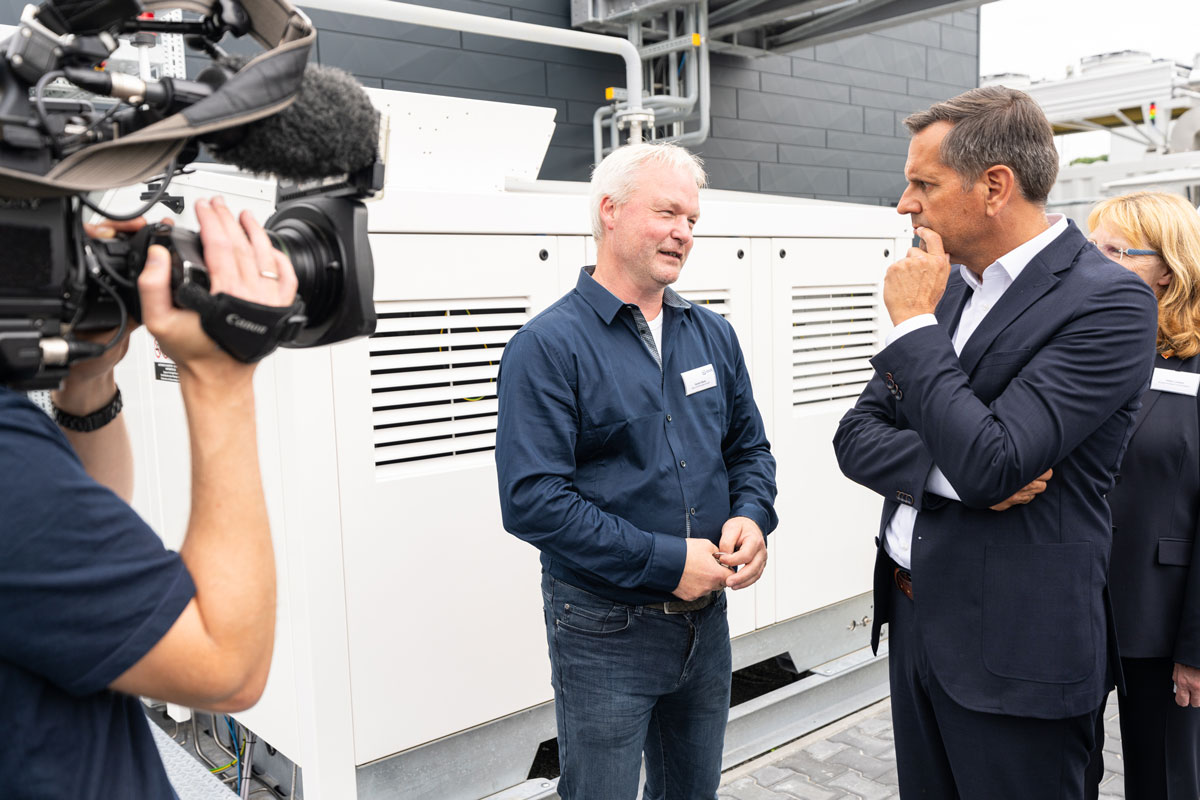
Project manager Harald Beek in conversation with Minister Olaf Lies
Why is OGE doing KRUH2 at all?
OGE is running the KRUH2 project to address the hydrogen ramp-up in practice. Hydrogen plays a central role in the energy transition, as it can reduce CO2 emissions as a clean energy carrier. KRUH2 enables us to gain important experience at the Krummhörn compressor station.
How does KRUH2 differ from other projects at OGE?
OGE is an operator of grid-based energy infrastructure. In other words, we build and operate gas pipelines. Today for natural gas, soon for hydrogen and CO2. This is our contribution to the energy transition. At the same time, we face key challenges in the green transformation of our operations. KRUH2 is therefore not a classic OGE pipeline construction project but is intended to find solutions for how we can operate our infrastructure more sustainably.
What are the next steps for KRUH2?
We will now gradually put the individual project components into operation. The focus is on the electrolyser. Then we will further optimise operations with digital solutions. The project will be further developed and is the nucleus of the green transformation at OGE.
Sources
1 Ministry of Environment, Energy and Climate Protection of the State of Lower Saxony (ed.). Niedersachsen ist Energiewendeland Nummer 1
